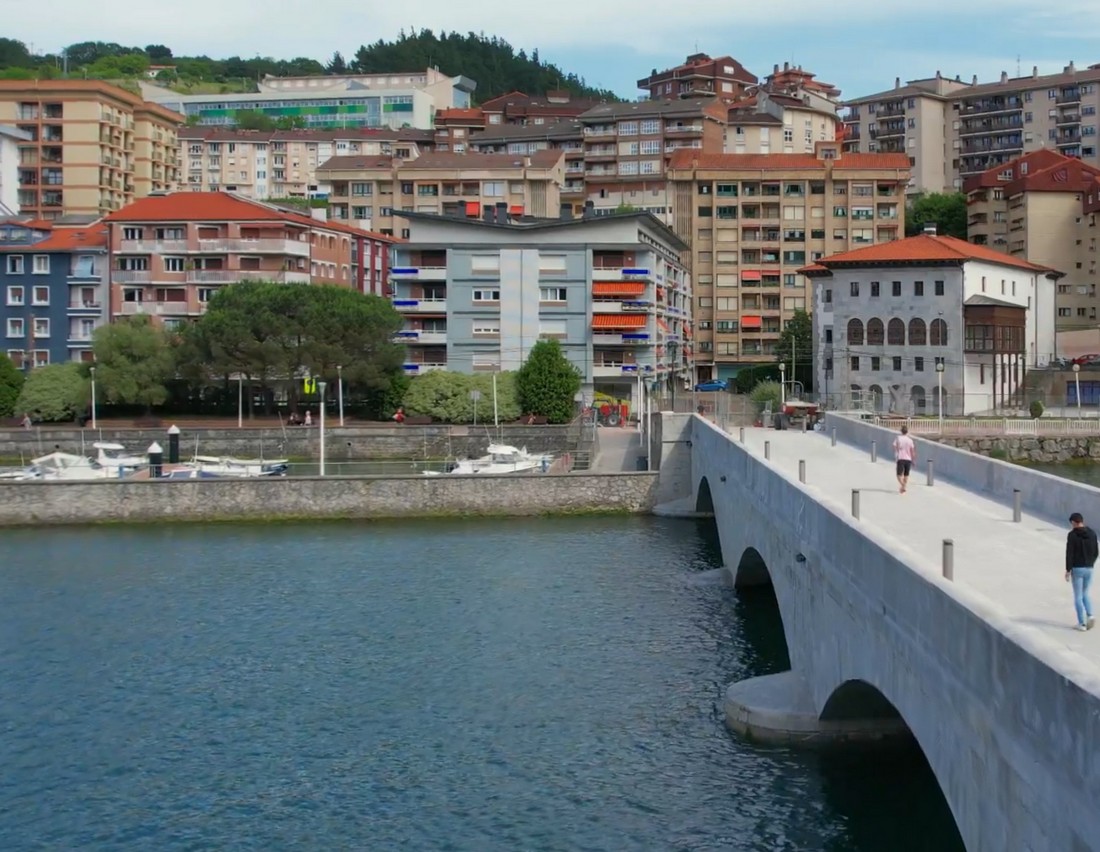
On 1 June, a press conference was held with the Deputy for Culture of the Provincial Council of Guipuzcoa and the mayors of Deba and Motrico to present the results of the restoration work on the bridge that once again links the two towns. The video illustrating the work carried out can be seen at youtube Following the partial collapse in July 2018 of the foundations of the central pier, due to the attack of the shipworm on the wooden piles that provided the only support for the stone piers, leaving two of the four vaults in a very precarious state, an emergency action was undertaken to consolidate the quasi-ruins and to allow subsequent rehabilitation, given that the bridge was classified as a cultural asset (Basque Government, 2012) within the Camino de Santiago Monumental Complex along the coast. The provisional crossing was opened in March 2019. In May of that year, the FHECOR-INJELAN joint venture presented the reconstruction project. The rehabilitation works did not start until April 2021 and have lasted 13 and a half months, under the Works Management of the same FHECOR-INJELAN joint venture team. The total budget, including the emergency phase, amounted to around 7 million euros. The work carried out, unique in its kind, consisted, first of all, in the underpinning of piers 1, 2 (the collapsed one) and 3, as well as abutment 1 (abutment 2 rests directly on the rock). Then pier 2 was raised to the original height of its altar and, after dismantling the quasi-collapsed sections of the vault, vaults 2 and 3 were rebuilt. The main thread of the work consisted of returning the bridge to the geometric configuration it had before the 2018 incident, with an adaptation of the platform that included interior and lateral lighting of the bridge elevations, in order to highlight the monumental character that it always had. The guiding principle of the work has been to go unnoticed, so that the passer-by who enjoys the bridge does not miss anything of what it had and now enjoys it to the full. During the works, there was a stand open to the public which illustrated the history of the bridge, the events of 2018, the emergency work and the reconstruction project itself, including a partial model of the bridge, on a scale of 1:15, of great educational value. An area next to the bridge will soon be open to the public, where the same contents and some new ones will be exhibited again. The aim was to vindicate the cultural role of the bridge as an object which, like culture itself, the binding force that binds a society together, is the tangible expression of this idea.



